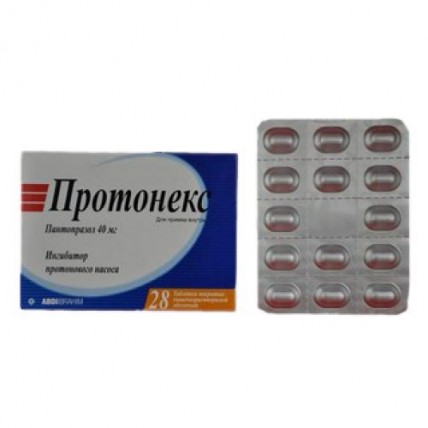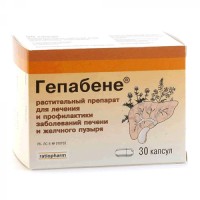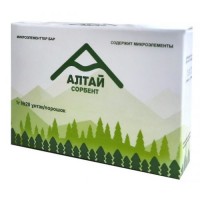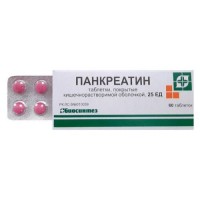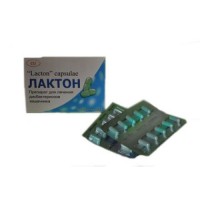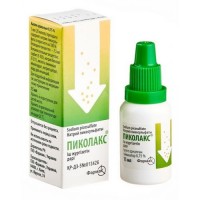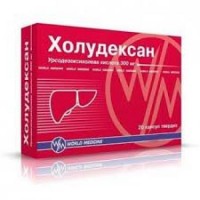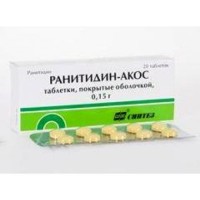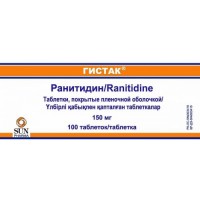Protoneks 28's 40 mg coated tablets
- $8.00
medicine for experts
of PROTONEKS
the Trade name
of Protonex
the International unlicensed
name Pantoprazol Lekarstvennaya
the Tablet form, covered with an enterosoluble cover, 40 mg
Structure
One tablet contains
active agent - pantoprazol 40 mg,
excipients: sodium a carbonate, Mannitolum, krospovidon, PVP K-90, PVP K-25, calcium stearate, talc, aerosol 200,
the structure of a cover – eudragit 30 - 55, trietit citrate, the titan dioxide, talc, ferrous oxide yellow, the water purified, alcohol.
The description
the Light yellow or yellow, oval tablets covered with an enterosoluble cover
the Pharmacotherapeutic
Inhibitor of the Protonew Pump group.
The code of automatic telephone exchange A02BC02
the Pharmacological
Pharmacokinetics Quickly properties is also completely absorbed after intake. Absolute bioavailability of 70 - 80% (average 77%). The maximum concentration in blood plasma (Cmax) - is reached in 2 - 4 h (on average, later 2.7 h). Linking with proteins of blood plasma makes 98%. Average elimination half-life (T1/2) - 0.9-1.9 h, distribution volume - 0.15 l/kg, clearance makes 0.1 l/h/kg. Very poorly gets through the blood-brain barrier (BBB), cosecretes in breast milk. Reception of antacids or food does not influence the square under a curve concentration - time (AUC), Cmax and bioavailability.
The pharmacokinetics is linear in the range of doses of 10-80 mg (in proportion to increase in a dose AUC and Cmax increases). T1/2 and Cl values of a dozonezavisima.
It is metabolized in a liver (oxidation, dealkylation, conjugation). Has low affinity to the system of P450 cytochrome, isoenzymes of CYP3A4 and CYP2C19 are involved in metabolism mainly. The main metabolites - demetilpantoprazol (T1/2 - 1.5 h) and 2 sulphated conjugates. It is removed mainly with urine (82%) in the form of metabolites, in a small amount it is found in Calais. Does not kumulirut. T1/2 at patients with cirrhosis increases up to 7-9 h, in a renal failure - increases slightly, but T1/2 of the main metabolite reaches 2–3 h AUC and Cmax slightly above in the senior age group.
The pharmacodynamics
As the substituted benzimidazole protonex is selective inhibitor of the proton pump. Collects in tubules of covering cells of a stomach and it is transformed to an active form - cyclic sulfonamide which selectively interacts (forms a covalent bond) with H+-K+-ATFazoy. Inhibits H+-K+-ATFazu of covering cells, breaks transfer of ions of hydrogen from covering cell in a gleam of a stomach and blocks a final stage of hydrophilic secretion of hydrochloric acid. Dozozavisimo it is long suppresses basal and stimulated secretion of hydrochloric acid. Values of an average effective dose at the researches in Vivo vary within 0.2-2.4 mg/kg. The maximum effect is shown only in strongly acid (pH 3) Wednesday (at higher values rn remains almost inactive). Has antibacterial activity concerning Helicobacter pylori and promotes manifestation of antikhelikobakterny effect of other drugs. The Minimum Overwhelming Concentration (MOC) makes 128 mg/l. The therapeutic effect after single dose occurs quickly and remains during 24 h. Provides fast reduction of symptomatology and healing of an ulcer of a duodenum. At reception in a dose of 40 mg of value rn> 3 more than 19 h remain. After 2 weeks of treatment (40 mg daily) full healing of a duodenal ulcer is noted at 89% of patients. In 4 weeks of treatment (40 mg) at 88% of patients the full healing of stomach ulcer is observed. Frequency of recuring of a round ulcer after treatment is 55%.
During 4 weeks of treatment in a dose of 40 mg/days provides full remission at 82% of patients with a gastroesophageal reflux disease of the II-III stage (on Savary - Miller), in 8 weeks - at 92%. Full endoscopic remission at 57% of children of 6-13 years with a gastroesophageal reflux disease of the I-II stage (on Vandeplas) is reached in 4 weeks of therapy in a dose of 20 mg/days.
For 4–8 weeks of treatment the gastrin level in blood plasma increases by 1.5 times. Maintenance therapy (40–80 mg are daily more than 3 years) at patients with a peptic ulcer was followed by insignificant increase in number of enterokhromaffinopodobny (ECL-) cells. Indications
- a peptic ulcer of a stomach and duodenum, including associated with Helicobacter pylori
- Zollingera-Ellison's syndrome
- gastroesophageal reflux a stage II-Sh disease (on Savary - Miller)
- round ulcers of not specified etiology.
The route of administration and doses
of the Tablet for intake should not be chewed or painted, they should be swallowed, washing down with enough liquid.
Monotherapy of a peptic ulcer of a duodenum
of Po of 40 mg/days in one step in the morning, to or after a breakfast. Duration of a course of treatment - 2 – 4 weeks.
Monotherapy of a peptic ulcer of a stomach
of Po of 40 mg/days in one step in the morning, to or after a breakfast. Duration of a course of treatment - 4 – 8 weeks.
A gastroesophageal reflux disease (GERD)
Adult - on 40 mg/days in one step in the morning, to or after a breakfast. Duration of a course of treatment - 4 – 8 weeks depending on severity of a disease on classification of Savary – Miller (stage II-Sh).
Children are 6–13 years old in a gastroesophageal reflux disease of the I-II stage (on Vandeplas) - on 20 mg/days in one step in the morning, to or after a breakfast within 4 weeks.
The combined eradikatsionny antikhelikobakterny therapy at patients with a peptic ulcer of a stomach or duodenum
of Po of 40 mg 2 times a day (before a breakfast and before a dinner or at meal time, without chewing and without destroying integrity of a tablet, washing down with liquid) in combination with amoxicillin (1000 mg 2 times a day) and klaritromitsiny (500 mg 2 times a day), or with metronidazole (500 mg 2 times a day) and klaritromitsiny (500 mg 2 times a day). Duration of a course of eradikatsionny therapy - 7 days (as much as possible up to 2 weeks).
Zollingera-Ellison
Po's syndrome 4 tablets Protoneksa a day. On reaching acid balance the dose decreases to minimum, but effective for maintenance of acid balance
Side effects
- diarrhea
- dryness in a mouth, the increased appetite, nausea, an eructation, vomiting, a meteorism, an abdominal pain, a constipation - a headache, an asthenia, dizziness, drowsiness, insomnia
- nervousness, a depression, a tremor, paresthesia, photophobia, disorders of vision, sonitus - rash, urticaria, an itching, a Quincke's disease
- myalgia, fever - an eosinophilia, a hyperglycemia, a giperlipoproteinemiya, a hypercholesterolemia, increase in activity of transaminases
- a hyperplasia of enterokhromaffinnopodobny cells.
Contraindications
- hypersensitivity to drug components
- a heavy liver and renal failure.
Medicinal interactions
reduction of pH-dependent absorption of a ketokonazol and other medicines is possible. Let's combine with the drugs which are metabolized with the participation of the fermental system of P450 cytochrome: Phenazepamum, diazepam, digoxin, theophylline, carbamazepine, diclofenac, Naproxenum, piroxicam, Phenytoinum, warfarin, nifedipine, metoprololy, ethanol. Does not affect efficiency of hormonal contraceptives.
Special instructions
Before an initiation of treatment have to be excluded malignant diseases of a gullet and stomach (symptomatic improvement can delay the correct diagnostics and treatment).
The diagnosis of a reflux disease has to be confirmed endoscopic.
It is not recommended to appoint to patients with not ulcer dyspepsia. At elderly patients and in a renal failure it is not recommended to exceed a dose of 40 mg/days. In a heavy liver failure, the mode of dosing has to be corrected: on 1 tablets every 2nd day, under control of level of liver enzymes.
Use in pediatric practice
So far there are literary data on treatment protoneksy GERD of the I-II stage (on Vandeplas) for children from 6 years. There is no experience of use of drug in other kislotozavisimy diseases of digestive tract at children's age.
Pregnancy and a lactation
At pregnancy it is possible only according to strict indications when the advantage for mother exceeds potential risk for a fruit. For the period of treatment it is necessary to stop breastfeeding.
Features of influence of medicine on ability to run the vehicle or potentially dangerous mechanisms
Considering side effects of drug it is necessary to be careful during the driving of the car and work with mechanisms
Overdose
Symptoms: strengthening of side effects of drug. Treatment: at suspicion on overdose performing the supporting and symptomatic therapy is recommended.
The form of release and packing
of the Tablet covered with an enterosoluble cover, 40 mg in blister No. 14 (2x7), and No. 28 (4x7) in cardboard packing with the instruction for use.
To Store storage conditions at a temperature not above +25C.
To store in places inaccessible for children!
2 years
not to apply an expiration date after the expiration date specified on packing
Prescription status
Without prescription
ABDI IBRAHIM Producer
of Hadymkaya-Stambul
Turkey
To develop
of PROTONEKS
the Trade name
of Protonex
the International unlicensed
name Pantoprazol Lekarstvennaya
the Tablet form, covered with an enterosoluble cover, 40 mg
Structure
One tablet contains
active agent - pantoprazol 40 mg,
excipients: sodium a carbonate, Mannitolum, krospovidon, PVP K-90, PVP K-25, calcium stearate, talc, aerosol 200,
the structure of a cover – eudragit 30 - 55, trietit citrate, the titan dioxide, talc, ferrous oxide yellow, the water purified, alcohol.
The description
the Light yellow or yellow, oval tablets covered with an enterosoluble cover
the Pharmacotherapeutic
Inhibitor of the Protonew Pump group.
The code of automatic telephone exchange A02BC02
the Pharmacological
Pharmacokinetics Quickly properties is also completely absorbed after intake. Absolute bioavailability of 70 - 80% (average 77%). The maximum concentration in blood plasma (Cmax) - is reached in 2 - 4 h (on average, later 2.7 h). Linking with proteins of blood plasma makes 98%. Average elimination half-life (T1/2) - 0.9-1.9 h, distribution volume - 0.15 l/kg, clearance makes 0.1 l/h/kg. Very poorly gets through the blood-brain barrier (BBB), cosecretes in breast milk. Reception of antacids or food does not influence the square under a curve concentration - time (AUC), Cmax and bioavailability.
The pharmacokinetics is linear in the range of doses of 10-80 mg (in proportion to increase in a dose AUC and Cmax increases). T1/2 and Cl values of a dozonezavisima.
It is metabolized in a liver (oxidation, dealkylation, conjugation). Has low affinity to the system of P450 cytochrome, isoenzymes of CYP3A4 and CYP2C19 are involved in metabolism mainly. The main metabolites - demetilpantoprazol (T1/2 - 1.5 h) and 2 sulphated conjugates. It is removed mainly with urine (82%) in the form of metabolites, in a small amount it is found in Calais. Does not kumulirut. T1/2 at patients with cirrhosis increases up to 7-9 h, in a renal failure - increases slightly, but T1/2 of the main metabolite reaches 2–3 h AUC and Cmax slightly above in the senior age group.
The pharmacodynamics
As the substituted benzimidazole protonex is selective inhibitor of the proton pump. Collects in tubules of covering cells of a stomach and it is transformed to an active form - cyclic sulfonamide which selectively interacts (forms a covalent bond) with H+-K+-ATFazoy. Inhibits H+-K+-ATFazu of covering cells, breaks transfer of ions of hydrogen from covering cell in a gleam of a stomach and blocks a final stage of hydrophilic secretion of hydrochloric acid. Dozozavisimo it is long suppresses basal and stimulated secretion of hydrochloric acid. Values of an average effective dose at the researches in Vivo vary within 0.2-2.4 mg/kg. The maximum effect is shown only in strongly acid (pH 3) Wednesday (at higher values rn remains almost inactive). Has antibacterial activity concerning Helicobacter pylori and promotes manifestation of antikhelikobakterny effect of other drugs. The Minimum Overwhelming Concentration (MOC) makes 128 mg/l. The therapeutic effect after single dose occurs quickly and remains during 24 h. Provides fast reduction of symptomatology and healing of an ulcer of a duodenum. At reception in a dose of 40 mg of value rn> 3 more than 19 h remain. After 2 weeks of treatment (40 mg daily) full healing of a duodenal ulcer is noted at 89% of patients. In 4 weeks of treatment (40 mg) at 88% of patients the full healing of stomach ulcer is observed. Frequency of recuring of a round ulcer after treatment is 55%.
During 4 weeks of treatment in a dose of 40 mg/days provides full remission at 82% of patients with a gastroesophageal reflux disease of the II-III stage (on Savary - Miller), in 8 weeks - at 92%. Full endoscopic remission at 57% of children of 6-13 years with a gastroesophageal reflux disease of the I-II stage (on Vandeplas) is reached in 4 weeks of therapy in a dose of 20 mg/days.
For 4–8 weeks of treatment the gastrin level in blood plasma increases by 1.5 times. Maintenance therapy (40–80 mg are daily more than 3 years) at patients with a peptic ulcer was followed by insignificant increase in number of enterokhromaffinopodobny (ECL-) cells. Indications
- a peptic ulcer of a stomach and duodenum, including associated with Helicobacter pylori
- Zollingera-Ellison's syndrome
- gastroesophageal reflux a stage II-Sh disease (on Savary - Miller)
- round ulcers of not specified etiology.
The route of administration and doses
of the Tablet for intake should not be chewed or painted, they should be swallowed, washing down with enough liquid.
Monotherapy of a peptic ulcer of a duodenum
of Po of 40 mg/days in one step in the morning, to or after a breakfast. Duration of a course of treatment - 2 – 4 weeks.
Monotherapy of a peptic ulcer of a stomach
of Po of 40 mg/days in one step in the morning, to or after a breakfast. Duration of a course of treatment - 4 – 8 weeks.
A gastroesophageal reflux disease (GERD)
Adult - on 40 mg/days in one step in the morning, to or after a breakfast. Duration of a course of treatment - 4 – 8 weeks depending on severity of a disease on classification of Savary – Miller (stage II-Sh).
Children are 6–13 years old in a gastroesophageal reflux disease of the I-II stage (on Vandeplas) - on 20 mg/days in one step in the morning, to or after a breakfast within 4 weeks.
The combined eradikatsionny antikhelikobakterny therapy at patients with a peptic ulcer of a stomach or duodenum
of Po of 40 mg 2 times a day (before a breakfast and before a dinner or at meal time, without chewing and without destroying integrity of a tablet, washing down with liquid) in combination with amoxicillin (1000 mg 2 times a day) and klaritromitsiny (500 mg 2 times a day), or with metronidazole (500 mg 2 times a day) and klaritromitsiny (500 mg 2 times a day). Duration of a course of eradikatsionny therapy - 7 days (as much as possible up to 2 weeks).
Zollingera-Ellison
Po's syndrome 4 tablets Protoneksa a day. On reaching acid balance the dose decreases to minimum, but effective for maintenance of acid balance
Side effects
- diarrhea
- dryness in a mouth, the increased appetite, nausea, an eructation, vomiting, a meteorism, an abdominal pain, a constipation - a headache, an asthenia, dizziness, drowsiness, insomnia
- nervousness, a depression, a tremor, paresthesia, photophobia, disorders of vision, sonitus - rash, urticaria, an itching, a Quincke's disease
- myalgia, fever - an eosinophilia, a hyperglycemia, a giperlipoproteinemiya, a hypercholesterolemia, increase in activity of transaminases
- a hyperplasia of enterokhromaffinnopodobny cells.
Contraindications
- hypersensitivity to drug components
- a heavy liver and renal failure.
Medicinal interactions
reduction of pH-dependent absorption of a ketokonazol and other medicines is possible. Let's combine with the drugs which are metabolized with the participation of the fermental system of P450 cytochrome: Phenazepamum, diazepam, digoxin, theophylline, carbamazepine, diclofenac, Naproxenum, piroxicam, Phenytoinum, warfarin, nifedipine, metoprololy, ethanol. Does not affect efficiency of hormonal contraceptives.
Special instructions
Before an initiation of treatment have to be excluded malignant diseases of a gullet and stomach (symptomatic improvement can delay the correct diagnostics and treatment).
The diagnosis of a reflux disease has to be confirmed endoscopic.
It is not recommended to appoint to patients with not ulcer dyspepsia. At elderly patients and in a renal failure it is not recommended to exceed a dose of 40 mg/days. In a heavy liver failure, the mode of dosing has to be corrected: on 1 tablets every 2nd day, under control of level of liver enzymes.
Use in pediatric practice
So far there are literary data on treatment protoneksy GERD of the I-II stage (on Vandeplas) for children from 6 years. There is no experience of use of drug in other kislotozavisimy diseases of digestive tract at children's age.
Pregnancy and a lactation
At pregnancy it is possible only according to strict indications when the advantage for mother exceeds potential risk for a fruit. For the period of treatment it is necessary to stop breastfeeding.
Features of influence of medicine on ability to run the vehicle or potentially dangerous mechanisms
Considering side effects of drug it is necessary to be careful during the driving of the car and work with mechanisms
Overdose
Symptoms: strengthening of side effects of drug. Treatment: at suspicion on overdose performing the supporting and symptomatic therapy is recommended.
The form of release and packing
of the Tablet covered with an enterosoluble cover, 40 mg in blister No. 14 (2x7), and No. 28 (4x7) in cardboard packing with the instruction for use.
To Store storage conditions at a temperature not above +25C.
To store in places inaccessible for children!
2 years
not to apply an expiration date after the expiration date specified on packing
Prescription status
Without prescription
ABDI IBRAHIM Producer
of Hadymkaya-Stambul
Turkey
To develop
